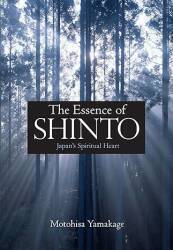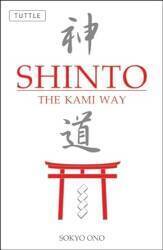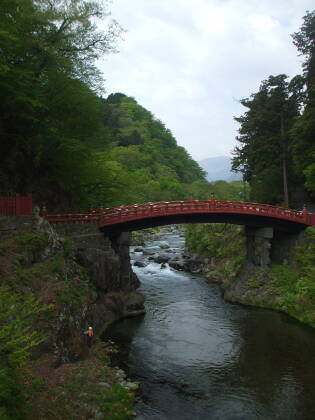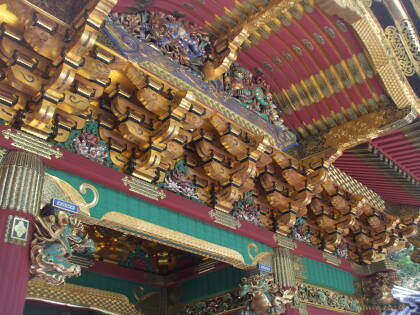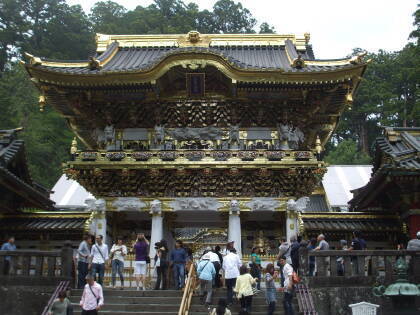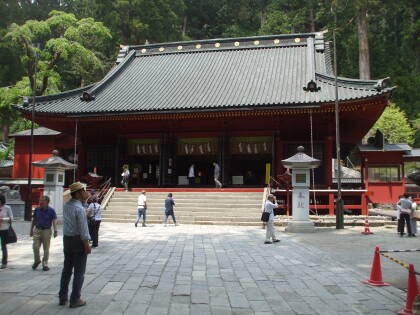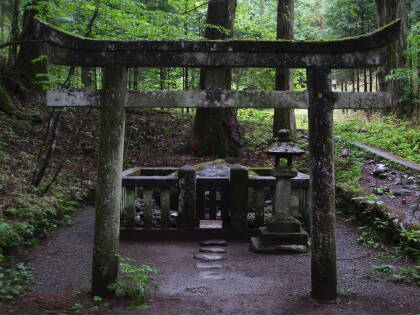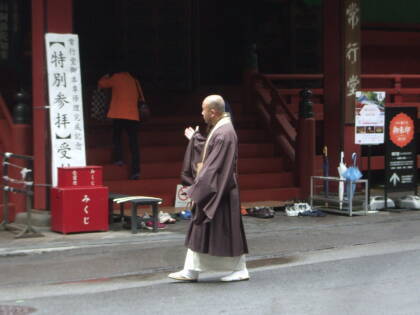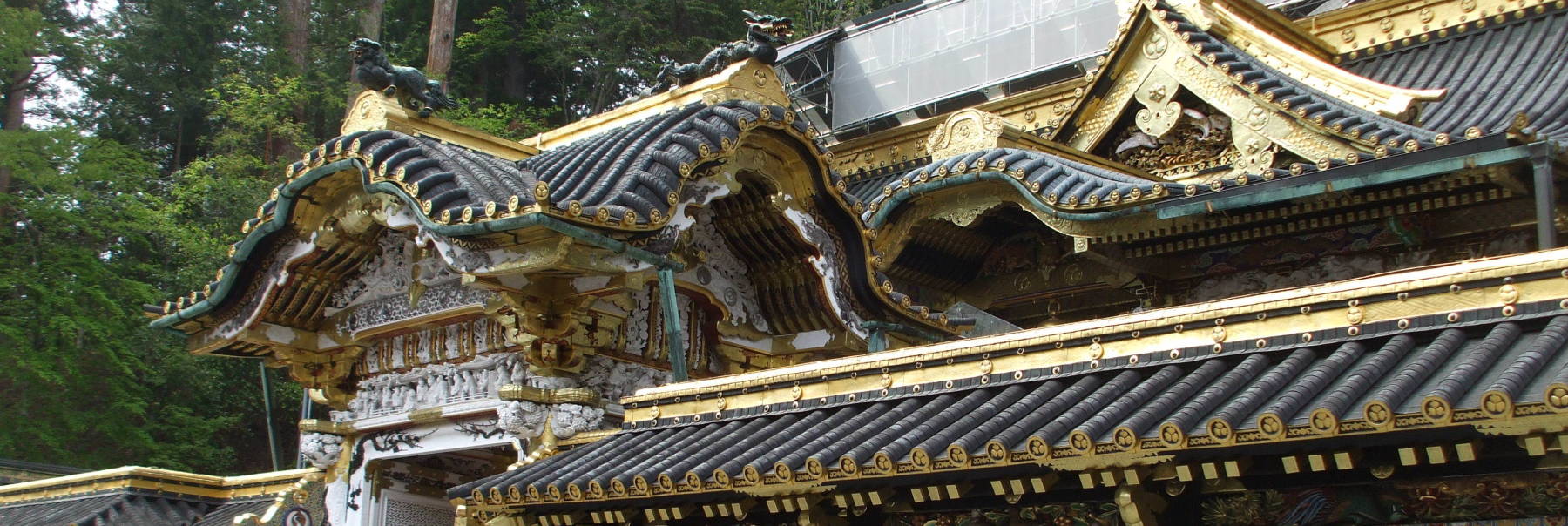
Tōshō-gū, the shrine of Tokugawa Ieyasu
Tokugawa Ieyasu
Tokugawa Ieyasu was the founder and first shōgun of the Tokugawa shōgunate. That feudal military government ruled Japan from 1600 until the Meiji Restoration of 1868.
There are shrines to him all over Japan, but the main one is at Nikkō where he was posthumously enshrined with the name Tōshō Daigongen.
This and all other shrines to him are named Tōshō-gū. There were 500 of them during the Edo period, but many were merged with other local shrines or simply abandoned after the Meiji Restoration. All the same, about 130 Tōshō-gū remain.
Tōshō-gū is extremely popular, check with where you're staying to find the best time of day for visiting.
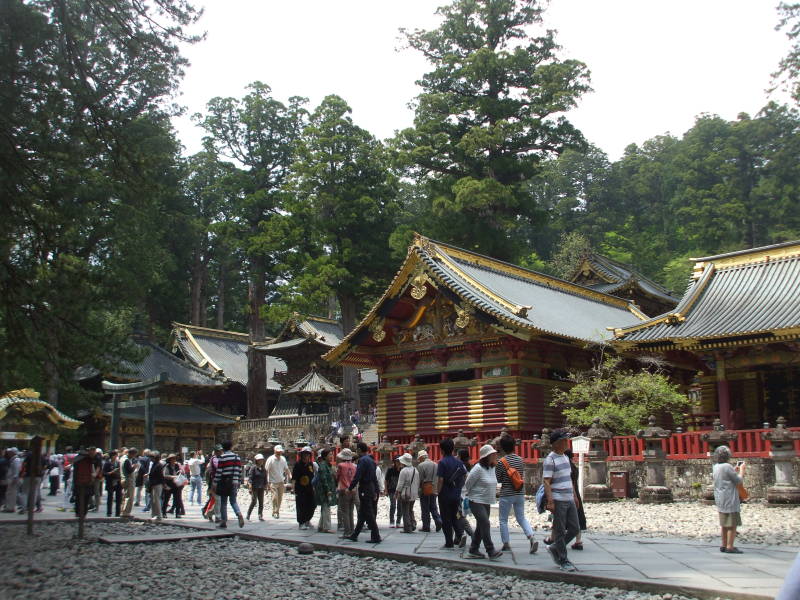
The Three Monkeys
One of the most popular sights at the Tōshō-gū complex is the carving of the Three Wise Monkeys. There are five carved panels of monkeys, but one is far more famous.
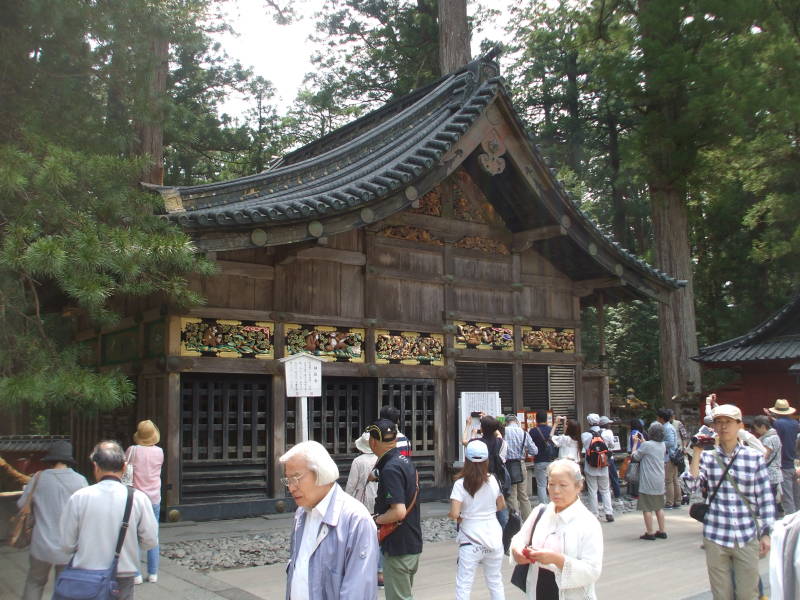
The Analects of Confucious from the 2nd to 4th century BCE says:
In Buddhist tradition, this is advice against dwelling on evil thoughts.
Dropping the last part and simplifying:
Also see Tibetan Buddhism's Three Vajras of "body, speech, and mind"; the eight practices of Buddhism Noble Eightfold Path, and Zoroastrianism's "good thoughts, good words, good deeds".
Tradition names the three monkeys Mizaru, Kikazaru, and Iwazaru, like how tradition names the Three Wise Men Melchior, Caspar, and Balthazar although there's no record of their actual names.
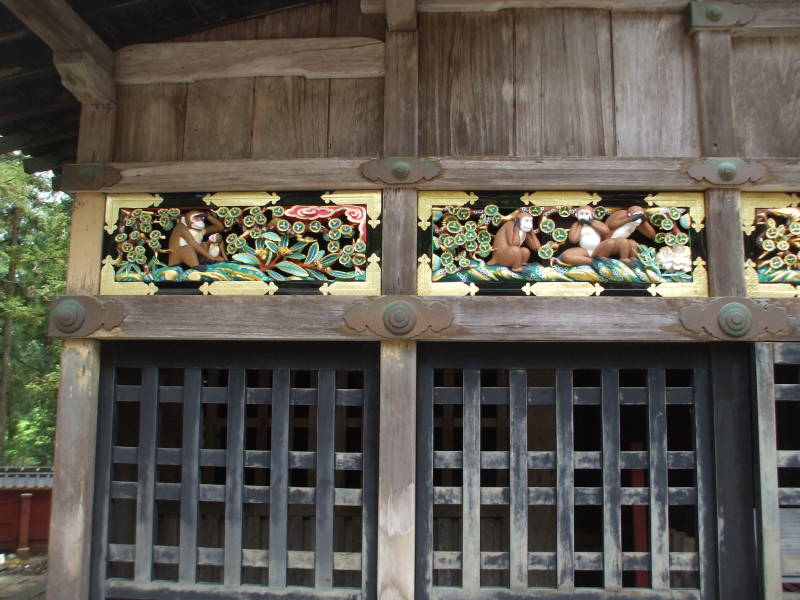
Today the saying is also used in a very different way, referring to a lack of moral responsibility, of looking the other way and allowing evil to happen.
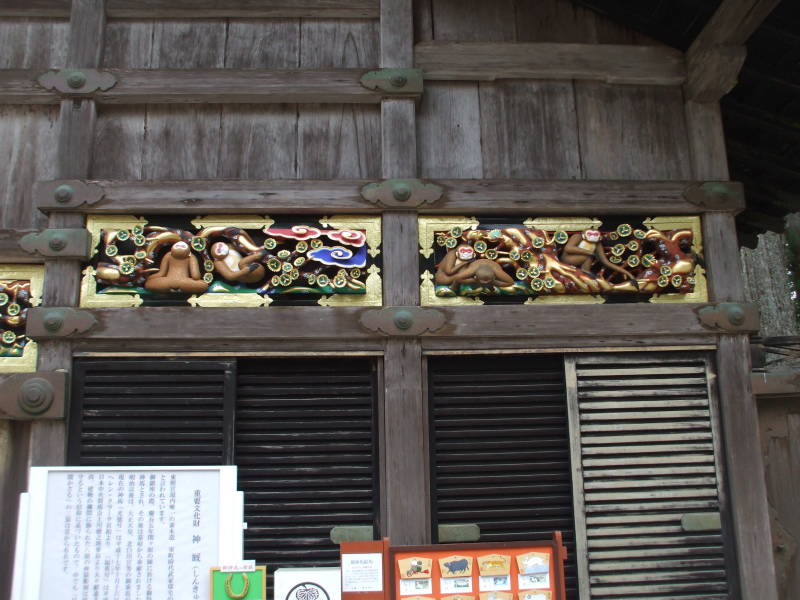
The Unicode Emoticons block now includes them:
- Mizaru
🙈🙈 SEE-NO-EVIL MONKEY - Kikazaru
🙉🙉 HEAR-NO-EVIL MONKEY - Iwazaru
🙊🙊 SPEAK-NO-EVIL MONKEY
We live in an age of wonders.
Ieyasu's father and mother were step-siblings, just 15 and 17 years old, respectively, when he was born in 1543. They lived in Okazaki Castle, near today's Nagoya. His clan was split when he was one year old.
When he was five years old, his father's enemy Oda Nobuhide. Nobuhide said he would execute the child unless his father cut all ties with his clan. His father refused, but Ieyasu wasn't executed. Instead, Nobuhide held him as a hostage for three years.
When Ieyasu was 6, his father was murdered by some of his own vassals, who had been bribed by the Oda clan. Around the same time, Oda Nobuhide died during an epidemic.
The Oda castle was under siege by the army of Imagawa Sessai and about to fall. Sessai offered a deal: hand over the hostage Ieyasu, and the siege ends.
Off went Tokugawa Ieyasu into another 7 years as a hostage, now at Sumpu. At least he was treated better, as he was a potentially useful future ally Imagawa clan, his father's old allies.
Below, we're looking up at the actual shrine complex.
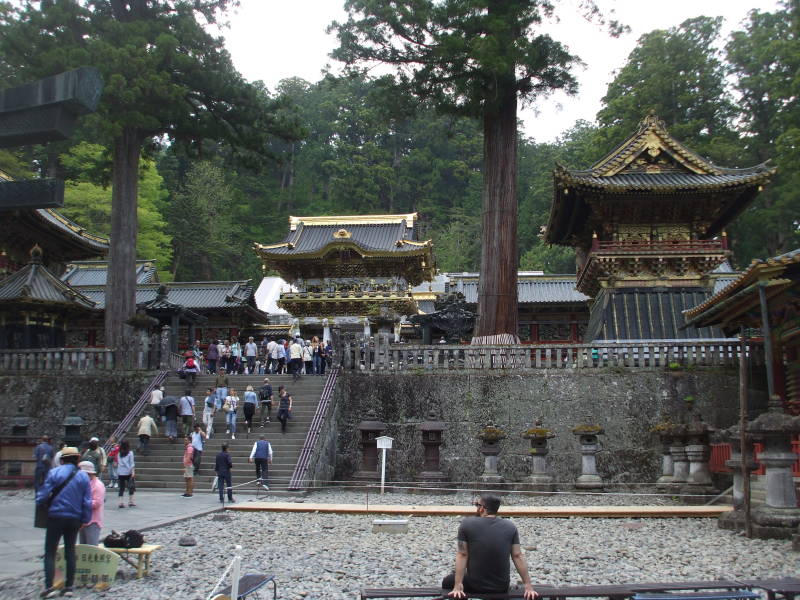
In 1556, Ieyasu had been alive for 13 years. But East Asian age reckoning starts with a newborn infant being 1 year old, and you add a year at each New Year. So, Ieyasu was considered to be 15, time for a coming-of-age ceremony. He changed his name (from Matsudaira Takechiyo to Matsudaira Jirōsaburō Motonobu), briefly visited his father's grave, got married, changed his name again (to Matsudaira Kurandonosuke Motoyasu), and reported as ordered to fight the Oda clan.
When his master was killed in battle, Motoyasu/Ieyasu marched his troops into the abandoned Okazaki Castle and reclaimed his ancestral home.
More alliances were formed and broken, hostages were taken and exchanged, and many battles were fought. In one, in which both sides were using the new gunpowder weapons the Portuguese traders had introduced to Japan just 20 years before, he was struck by two bullets which did not penetrate his armor.
In 1567, he changed his name again, to Tokugawa Ieyasu. That one stuck.
In 1570 he established his territory's capital in Hamamatsu, roughly between Nagoya and today's Tōkyō.
Below is the Karadou-torii, said to be the first bronze torii in Japan.
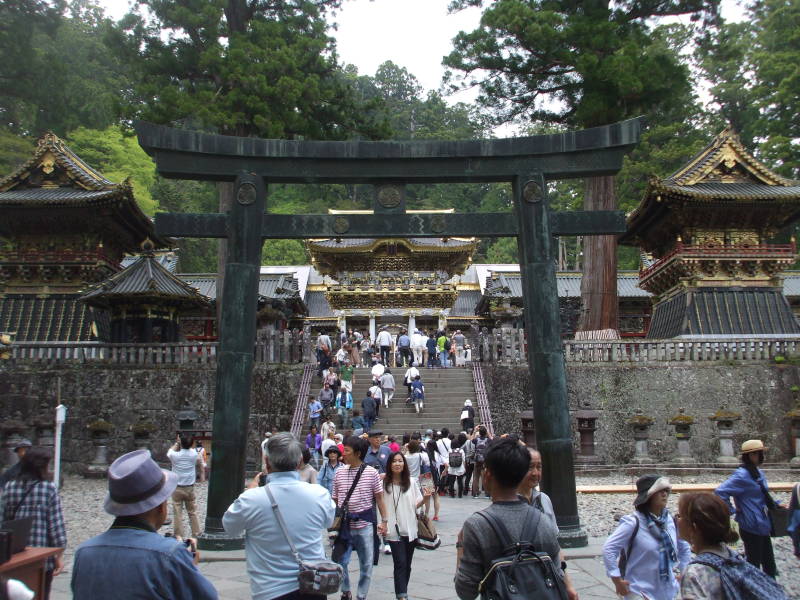
Becoming the Shōgun
There were more hostages and intrigue, more seppuku, and above all, more battles.
In 1599, almost all of the the daimyō (or feudal lords) and samurai split into two factions. In October 1600, a battle was fought near Sekigahara. About 160,000 men faced each other, it was the largest and one of, if not the, most important battle in Japanese feudal history.
Ieyasu's side was victorious, the next few days were filled with hunting down and killing surviving nobles of the opposing side.
Tokugawa Ieyasu was now the ruler of Japan.
Yes, there was still an Emperor in Kyōto. Shintō teaches that the Emperor is descended from the gods who created the universe, and so according to Shintō (and definitely according to the Emperor), he was in charge.
VisitingKamakura
But the Emperor's was the go-between for Japan and the gods, his relatives. Mundane things like running the country had been handled by warlords for a few centuries now. The Kamakura Shōgunate in 1192-1333 had been the first period in which one warlord held centralized power. And now Tokugawa Ieyasu was the top warlord.
In 1603, Emperor Go-Yōzei made Tokugawa Ieyasu the Shōgun. This made it official.
Ieyasu created the Tokugawa Shōgunate, which ruled Japan for the next 250 years. He supervised the building of Edo Castle, which took the rest of his life and resulted in the largest castle in the world. Edo was a small fishing village on a large bay further east along the coast. The 250 years of the Tokugawa Shōgunate are called the Edo Period. Now Edo has grown into an enormous city, today called Tōkyō, and the Imperial Palace has been built over the side of Edo Castle.
He supervised diplomatic affairs with the Netherlands, Spain, and England. Starting in 1609, he began limiting European influence, although he still granted preferential trading rights to the Dutch East Indies Company, permitting them to maintain a base in Nagasaki, in the far southwest.
In 1614, he became worried by Spain's pattern of invading territories in the New World and the Philippines, and he issued a Christian Expulsion Edict that applied to all Europeans except the Dutch trading base, which was very limited in size and access to the surrounding city.
An individual exception was William Adams, a shipwrecked English shipwright and ship's pilot who had become fluent in Japanese and knowledgeable about the country and its culture. Ieyasu continued consulting with Adams for the rest of his life. Competing Roman Catholic factions had complained that Adams wasn't helpful to them, making Ieyasu trust him even more.
James Clavell's novel Shōgun tells the story, calling the Shōgun "Toranaga" and a loosely based version of the English sailor "John Blackthorne".
Here is the famous Yomeimon Gate. Visual overload!
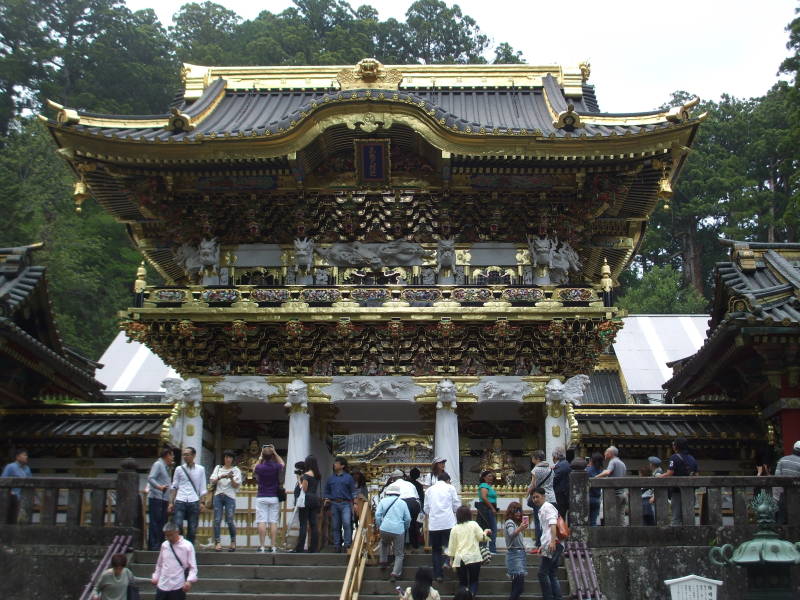
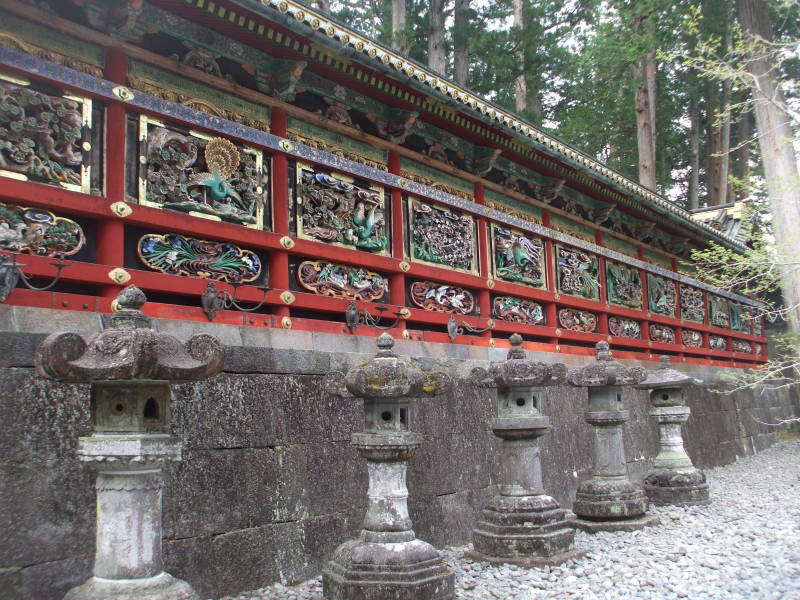

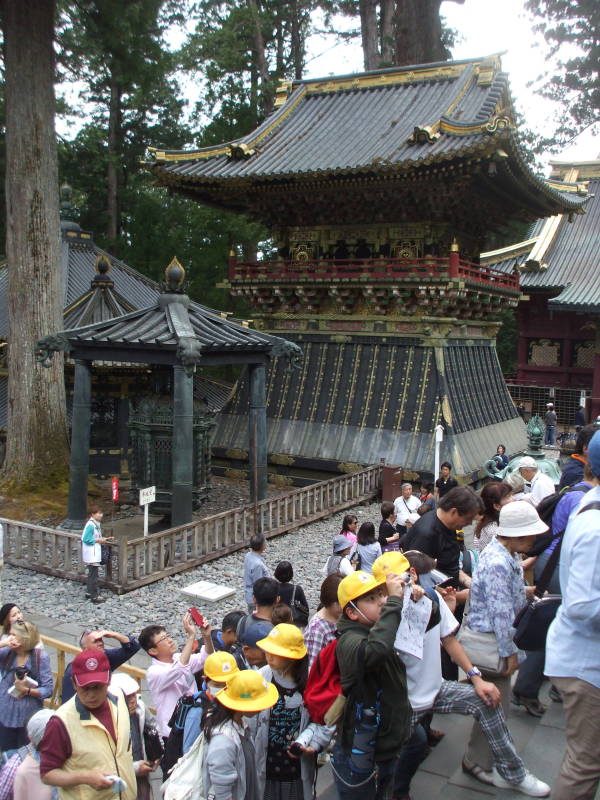
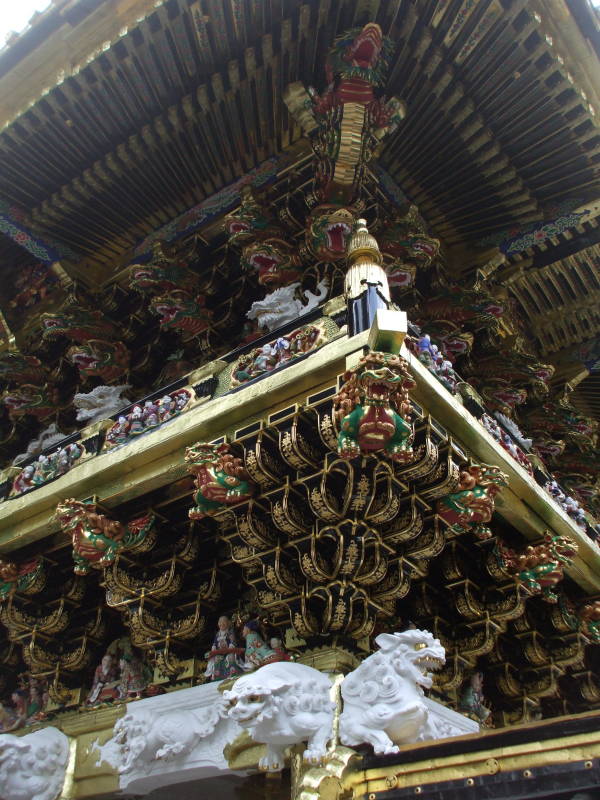
Starting to move from the shrine to the path up the mountain to Ieyasu's grave, we approach another carving that causes a frenzy of photography.
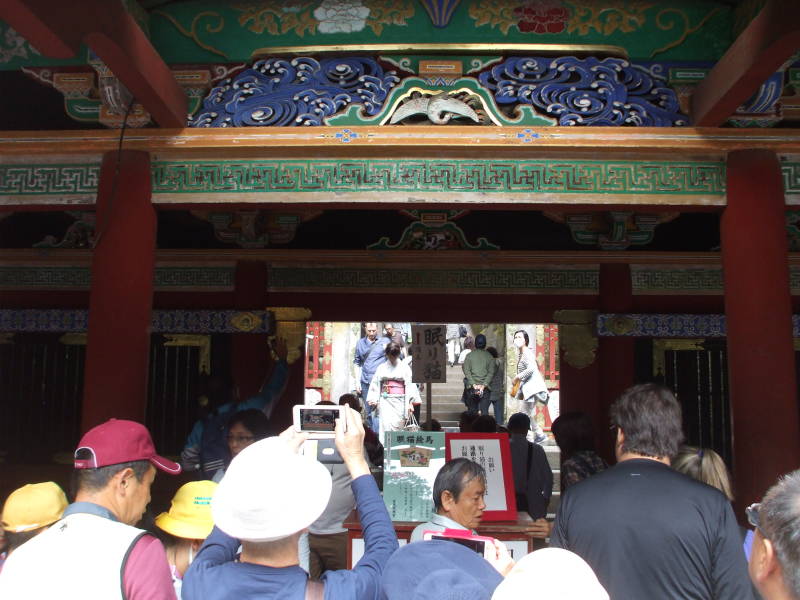
Yes, it's the famous Nemuri-neko or, literally, Sleeping Cat. It's said to have been carved by Hidari Jingorō, an artist who may or may not have existed in the early Edo period. Claude Monet had a version of this in his home at Giverny.
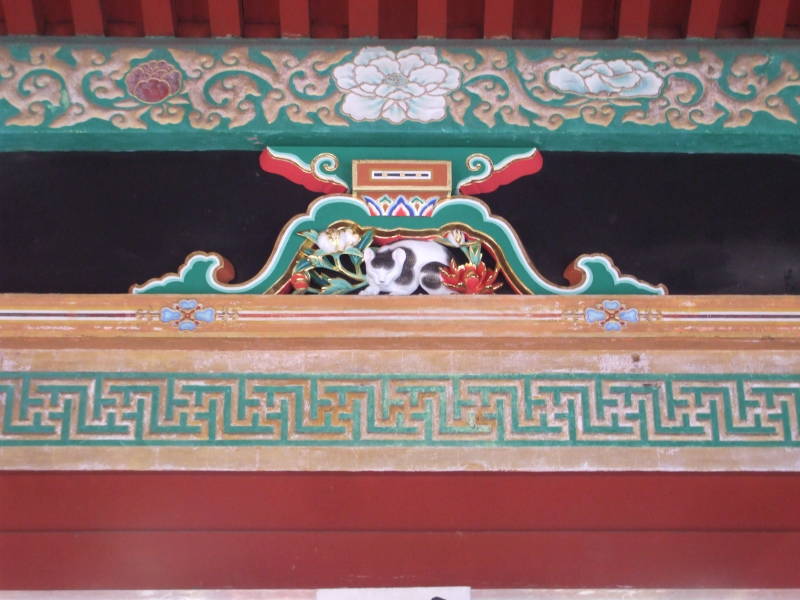
Buddhism
Tokugawa Ieyasu died in 1616 at the age of 73, apparently from either cancer or syphilis. The Emperor has always, of course, followed Shintō. But the warrior class in Japan tended to be Buddhists. Ieyasu, like many powerful men, hedged his bets by being involved in both.
Shinbutsu-shūgō is the idea that a Shintō kami could manifest as a Buddhist bodhisattva, or bosatsu in Japanese. That led to most Buddhist temples including a small Shintō shrine, and vice-versa.
He had said that he wanted to be declared a deity after he died. He was declared Tōshō Daigongen. That means "The Great Gongen, Light of the East", where a Gongen is a Buddha who appeared on Earth in the form of a kami, the Shintō term and concept for a god or god-like being, in order to save sentient beings.
His remains were buried at the Gongen mausoleum, Kunōzan Tōshō-gū, in Shizuoka. The official story is that after the first anniversary of his death, his remains were moved to Nikkō and buried in the grave complex seen below, on up the mountain behind the shrine. His remains are in the cylinder, guarded by a crane and a turtle, symbols of good fortune and longevity, respectively.
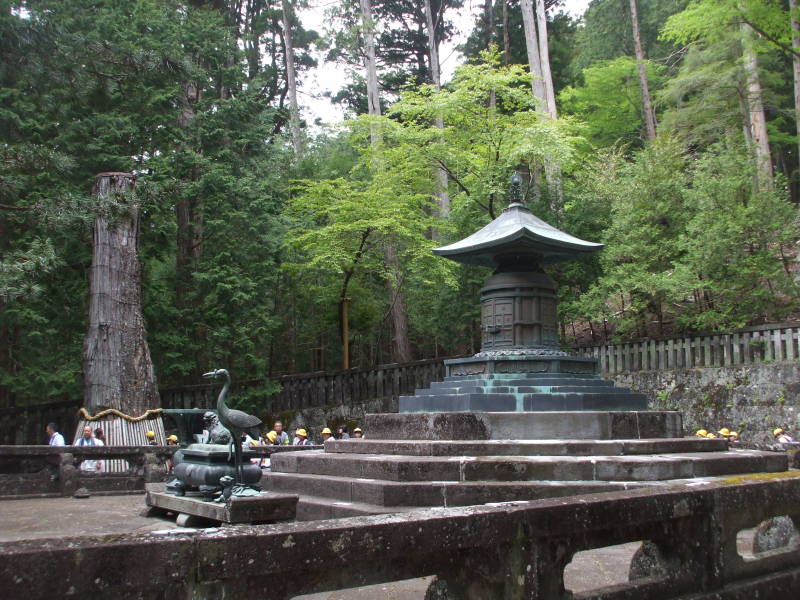
At least that's the official story. Neither shrine will entertain the idea of opening a grave, so the precise current location remains a mystery.
Back down to the shrine area, where the crowd has thinned just a little.
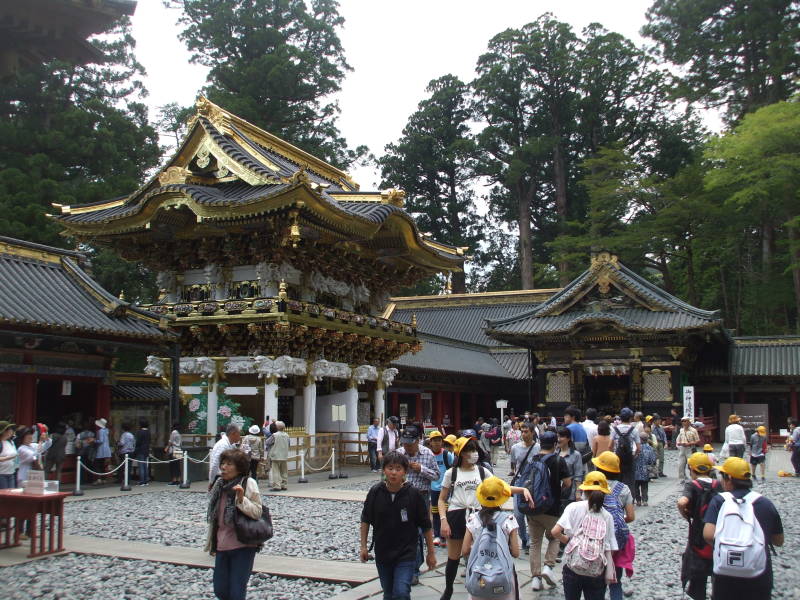
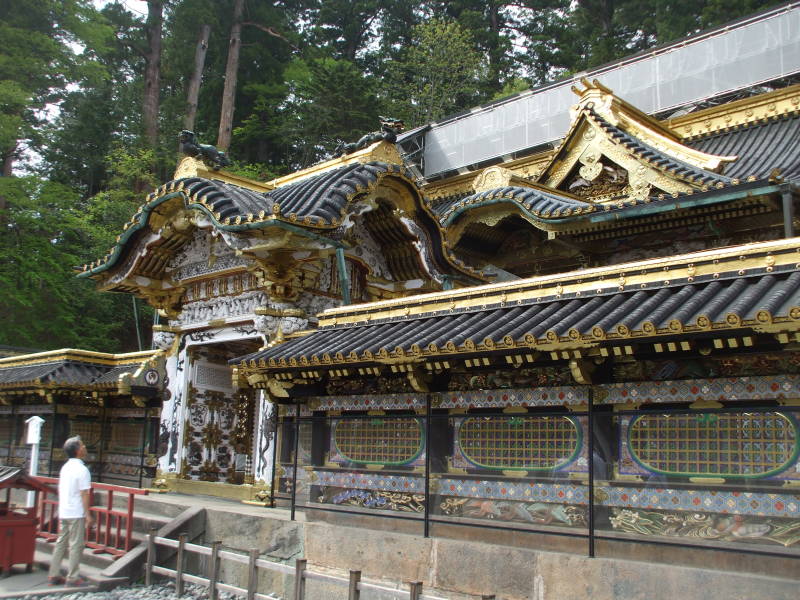
This is the Karamon Gate, leading further into to more sacred territory.
The honden or shinden or shōden is the most sacred structure at a Shintō shrine. It is strictly for the use of the enshrined kami (or spirit).
The honden of a shrine is usually at the rear, inaccessible by the general public. It is relatively small, typically with a gabled roof. Its doors are kept closed most of the time. At a religious festival, the priests carry out a rite to open the doors then enter the honden briefly to perform rituals.
The go-shintai, literally "the sacred body of the kami", the central totemic object, is kept in the honden, the most sacred area of the shrine.
Except... the go-shintai isn't divine, it's a temporary repository of the enshrined kami. It makes the kami accessible to human beings for worship.
In front of the honden is usually the haiden or oratory. In a more elaborate shrine, a heiden or hall of offerings may connect the haiden to the honden.
So, from outside to inside:
haiden — heiden — honden.
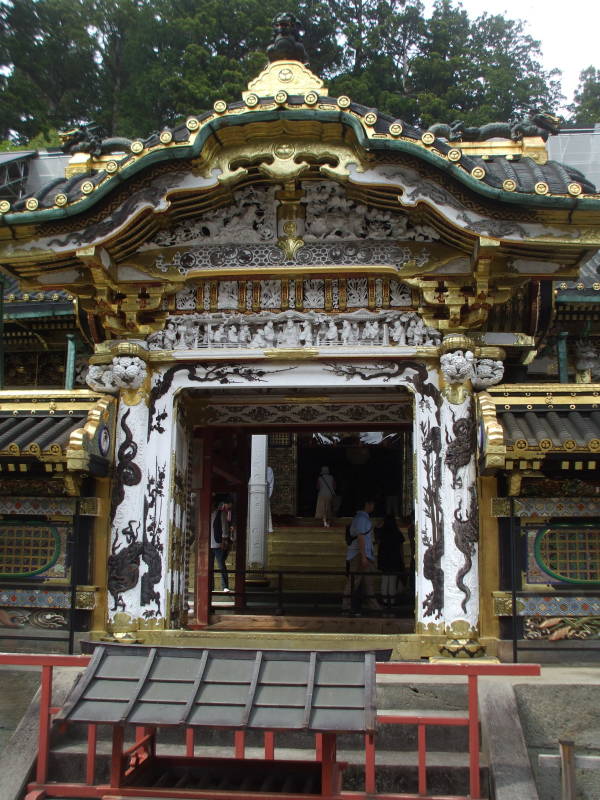
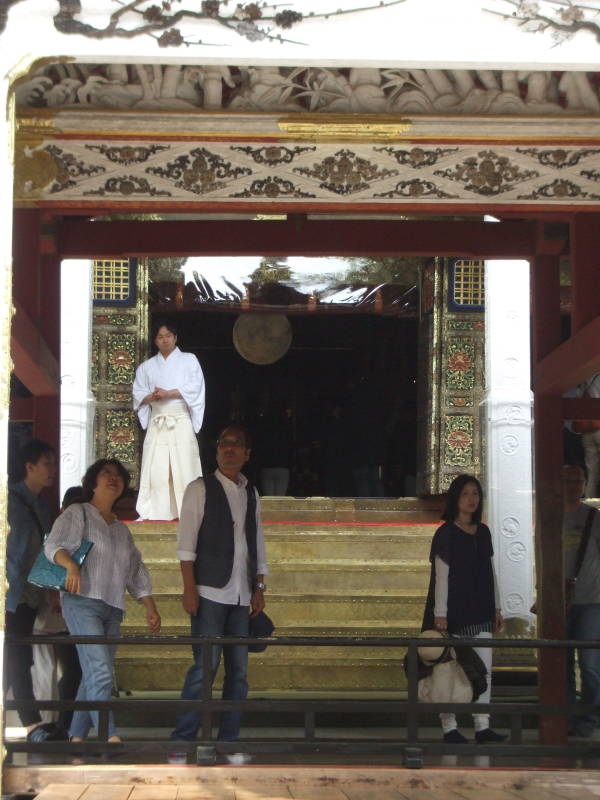
Above we see a Shintō priest in white standing at the door into the haiden.
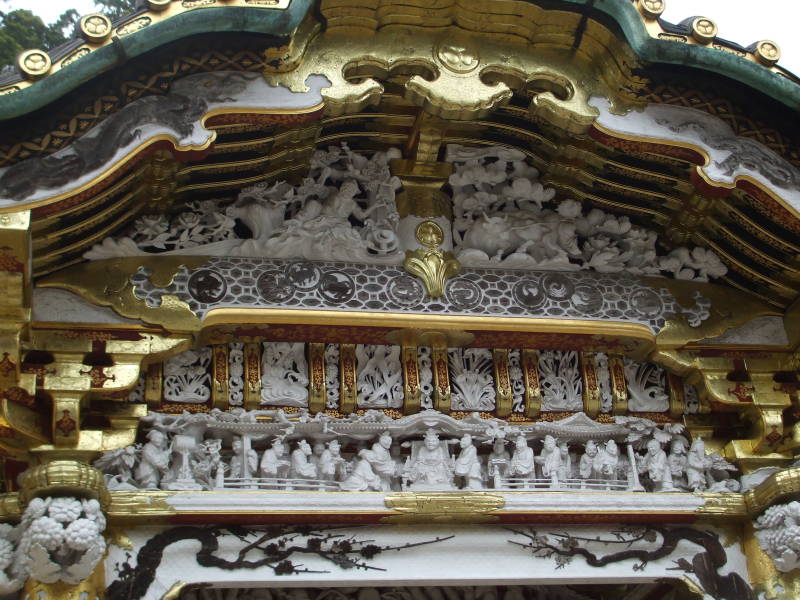
Divine palanquins or portable shrines called o-mikoshi can carry the go-shintai, the "god-body", during a festival. They physically protect the go-shintai and hide it from sight. They could also move the go-shintai and kami to a new shrine location, or to capture a kami somewhere and transport it for enshrinement at a newly built shrine.
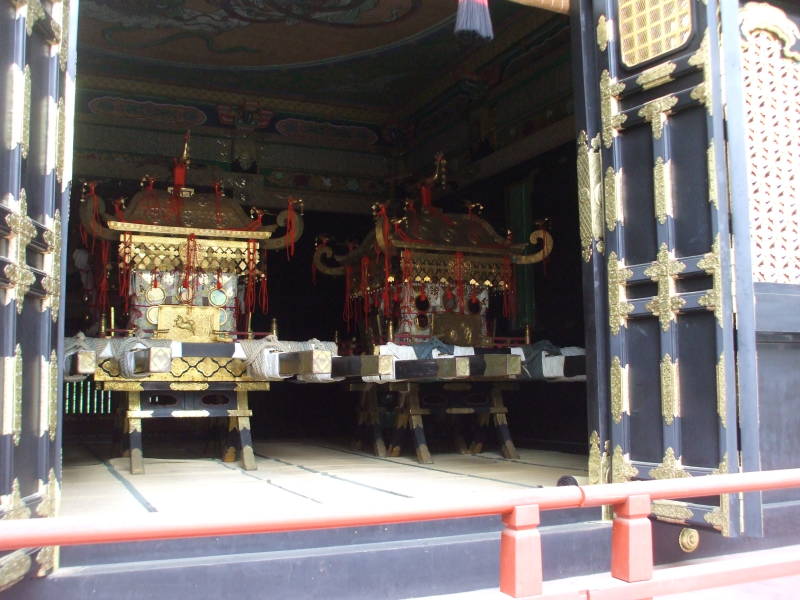
Sake producers traditionally donate barrels of their product to prominent shrines.
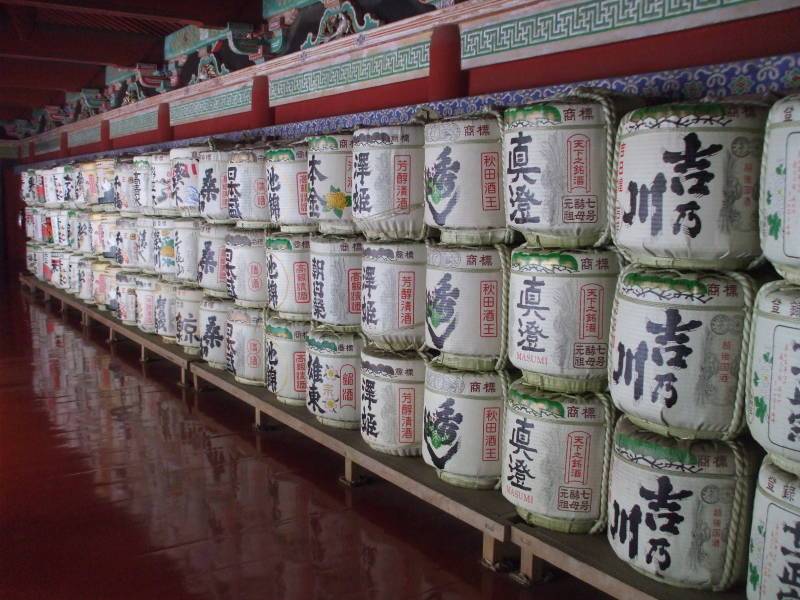
You can buy an ema or prayer plaque, write your prayer on it, and hang it on the rack for the kami to receive it.
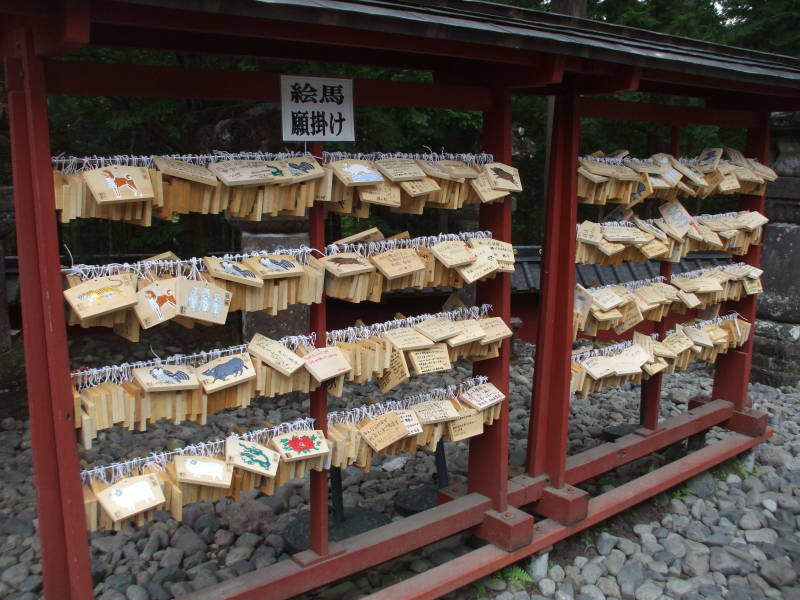
Many amulets, charms, and other souvenirs are for sale.
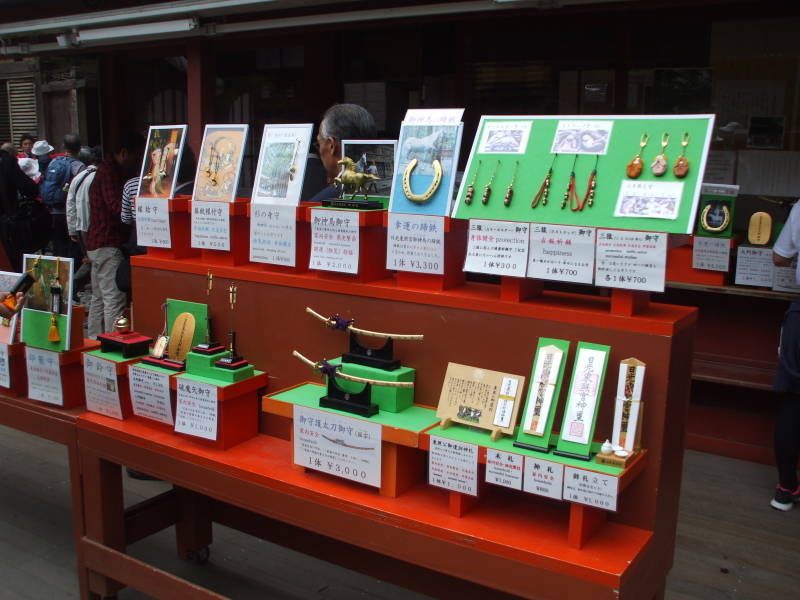
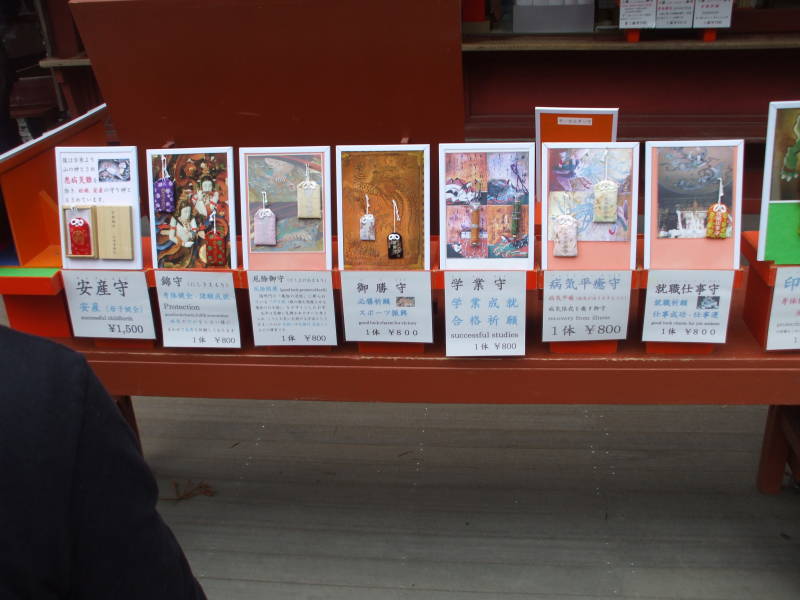
Choose your next stop around Nikkō:
Or, somewhere else around Japan:
